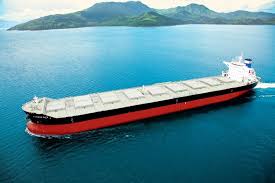Arguably the largest % gain ever during a 32-day period for the Capesize index having moved 1,449% higher (USD 28,865), the index is now within USD 7,000 of the 2019 high. Above this level will be unchartered territory for the 5TC Capesize index which replaced the old index back in 2014. We have seen moves equal or greater than this over a 32-day period, however, this has always been from a considerably higher base making this move significant.
Why is it significant?
In 2003 the Capesize index started moving hard and fast in what turned to to be the biggest bull run in the market’s history. During the 2003–2008 bull run, the index moved more than USD 28,865 during a 32-day period on five occasions. Given that the index reached a high of USD 234,000, these moves although significant, were often part of a bigger move.
During 2009 and 2011 we witnessed a further four moves greater than what we have recently seen, this was the countertrend move after the global economic crash, the reality is the market recovered between 38%–40% as the global economy entered a V-shaped recovery. Unlike equities, freight could not sustain higher levels due to the excess tonnage in the market.
2013 seems to have been an anomaly, a strong push with no significant follow through, a mini bull cycle before the reality kicked back in, again too much tonnage.
Seven years of famine
Without getting biblical, the average index value from 2006 to 2012 was USD 52,464, whereas the average index value from 2013 to 2019 was only USD 13,492. The market has seen seven years of feast, seven years of famine, and coincidentally the index is producing moves associated with longer-term bull cycles.
Does this mean that we are about to see another super cycle?
While 2008 was a mess with the global economy crumbling under the great subprime Ponzi scheme. 2020 is something different – and an unknown due to it being the first pandemic in 102 years.
What we do know is that the global economy has hit heart-attack mode and needs reviving. We have seen expanding growth in China for many years, driven by government policy spending. In Europe and the U.S in recent years, Governments have used cash injections via cheap lending rates to stabilize localized markets during economic downturns.
With the economic effect being so far reaching, there is a solid argument for Government policies on infrastructure projects. This time it is more about the need to create jobs rather than managing debt piles, globally we will need to put money back into localized economies, historically capital injections tend to protect financial hubs and take longer to filter down to the grass roots.
Freight rates and super cycles to the degree we witnessed in 2008 would seem unlikely, due to fleet expansion. However, if western economies do move away from capital injection to investment in infrastructure alongside the Chinese, then a sustained shipping rally could happen.
FIS
